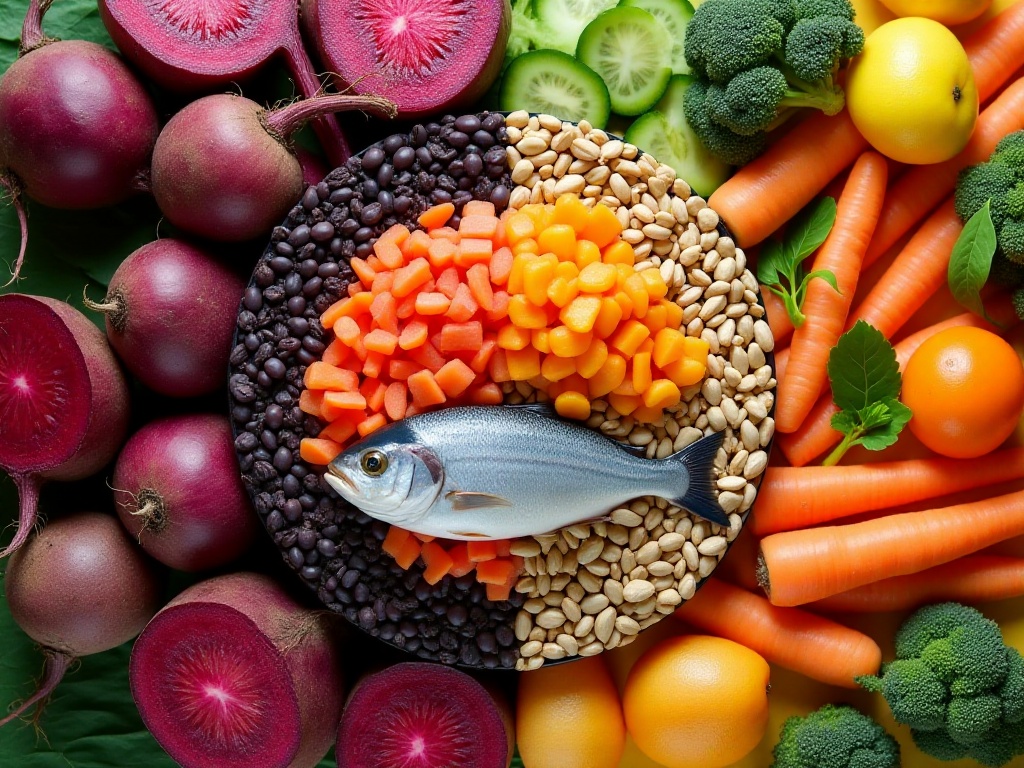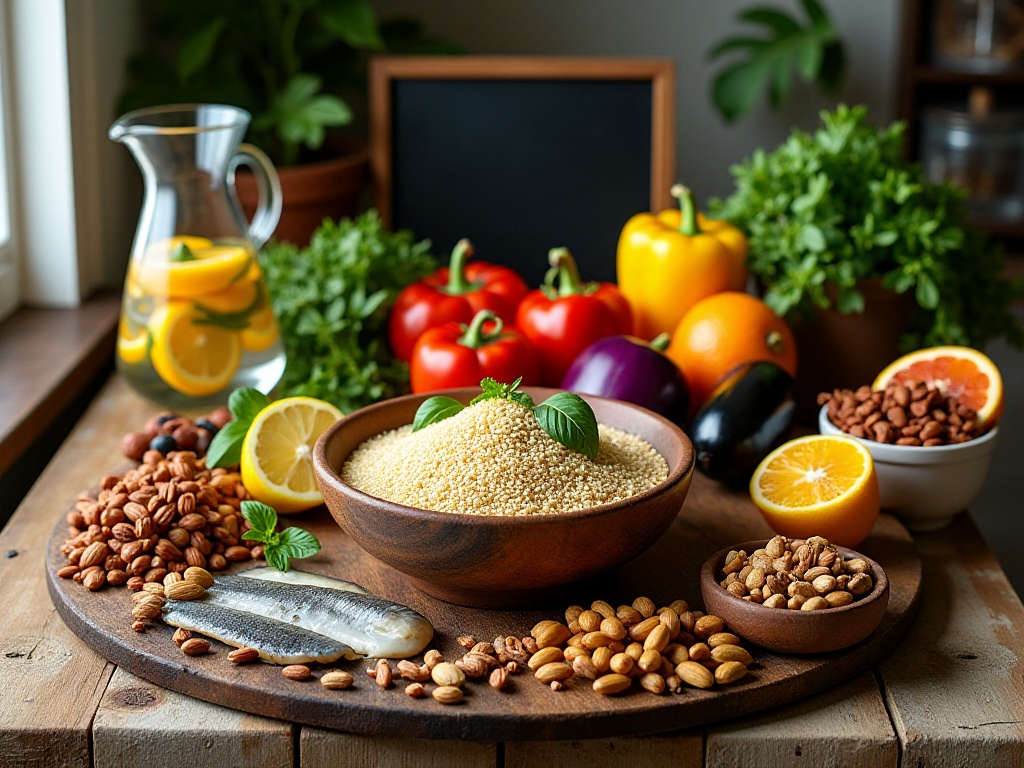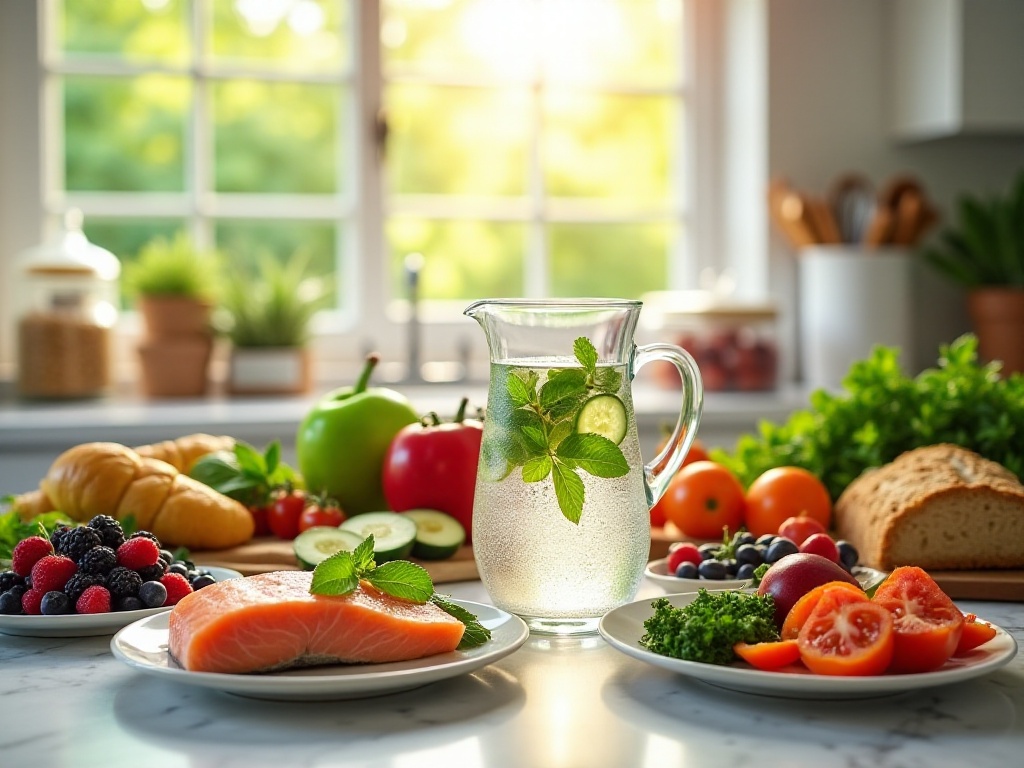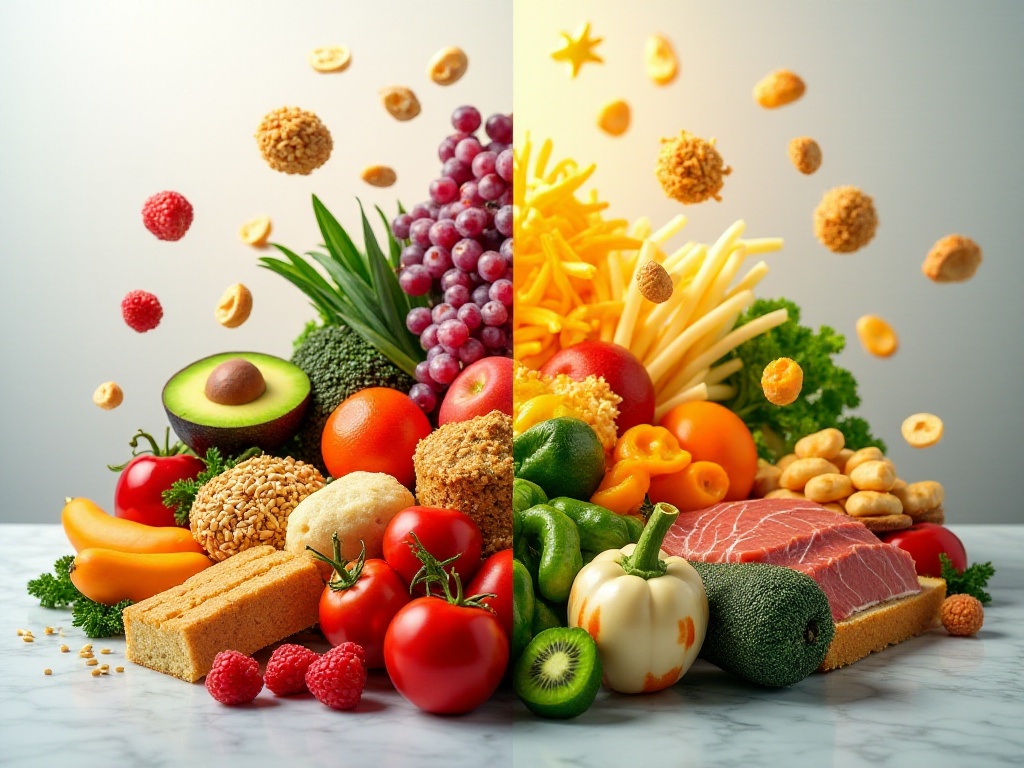When you open food delivery apps and see the dazzling array of options, do you also often find yourself struggling to make a choice? As a foodie who has been studying nutrition since college, I deeply understand the importance of healthy eating. After years of exploration in both the gym and kitchen, I've discovered that pursuing a healthy diet isn't complicated at all - the key lies in establishing correct knowledge and habits. Today, I'd like to share my personal insights, hoping to help you overcome decision paralysis and easily achieve nutritional balance.
When many people think of healthy eating, their first reaction is "watching what you eat." Especially on social media, various trends like "sugar-free," "keto," and "16/8 intermittent fasting" keep emerging, making it overwhelming. Actually, the core of healthy eating isn't restriction but balance. Let's start with the most basic nutritional elements.
Speaking of dietary fiber, this might be one of the most overlooked nutrients. According to nutritional research, consuming 25-35 grams of fiber daily not only promotes intestinal movement and prevents constipation but also helps control blood sugar levels and reduces cardiovascular disease risk. Most importantly, dietary fiber can provide lasting satiety and prevent overeating. However, in reality, our actual intake is often less than half the recommended amount.
I remember when I first started paying attention to fiber intake, getting 25-35 grams daily seemed astronomical. Later, I discovered that this goal is actually quite achievable with slight dietary adjustments. For example, breakfast could be a bowl of 50g oatmeal (about 5g fiber), with a handful of almonds (about 3g fiber) and an apple (about 4g fiber). This breakfast alone easily provides 12g of fiber. For lunch and dinner, replacing refined grains with brown rice or whole wheat bread, along with appropriate portions of vegetables, quickly helps reach the target.
Protein is another frequently misunderstood nutrient. There's a saying in fitness circles about "not getting enough protein," leading many people to frantically supplement with protein powder. However, according to WHO recommendations, average adults only need 0.8-1g of protein per kilogram of body weight daily. This means a 60kg person only needs 48-60g of protein daily. This might not seem like much, but consider that one regular egg contains 6-7g of protein, and 100g of chicken breast contains about 20g of protein.
Excessive protein intake not only doesn't bring additional health benefits but can increase kidney burden. My suggestion is to include quality protein sources in every meal, but don't deliberately pursue high protein. Breakfast could be two boiled eggs with whole wheat bread, lunch could be stir-fried shrimp with brown rice, and dinner could be tofu soup with steamed fish. This meets protein needs without excess.
The "eat the rainbow" concept originally came from the USDA dietary guidelines, telling us in a simple and intuitive way that our diet should be diverse. Foods of different colors contain different phytonutrients, all important for our health.
Red foods like tomatoes contain lycopene, a powerful antioxidant that can prevent prostate cancer and cardiovascular disease. Besides tomatoes, red peppers, watermelon, and red dragon fruit are also good choices. I particularly like making pasta sauce with tomatoes, which is not only delicious but also fully releases lycopene.
Orange foods are rich in carotene, which can convert to vitamin A in the body, benefiting vision and immunity. Besides carrots, pumpkin, oranges, and mangoes are good choices. I often add shredded carrots to salads or make pumpkin soup, which is both nutritious and delicious.
Green vegetables are nutrition superstars, rich in folic acid, iron, vitamin K, and other nutrients. Spinach, broccoli, and asparagus are all excellent choices. I love cutting broccoli into small florets, blanching them, and drizzling with olive oil and lemon juice - simple yet delicious.
Purple foods contain abundant anthocyanins, powerful antioxidants particularly beneficial for brain health. Besides eggplant, blueberries, purple cabbage, and purple sweet potatoes are great choices. I often make salads with shredded purple cabbage or substitute purple sweet potatoes for regular mashed potatoes, not only increasing nutritional value but also making meals more colorful.
My current meal principle is to include at least three different colored foods in each meal. For example, breakfast could be red strawberries with brown oatmeal and yellow bananas; lunch could be green broccoli with white chicken breast and orange carrots; dinner could be purple eggplant with red tomatoes and green vegetables. This ensures nutritional balance while making meals visually appealing.

Weekend preparation is key to healthy eating. I usually spend two to three hours on Sunday afternoon doing preparation work for the week. First is planning next week's meals, listing daily menus based on season and personal preferences. Then shopping for ingredients - I usually buy fresh vegetables and fruits at farmers' markets and storable ingredients at supermarkets.
Back home, I process ingredients by category. First is vegetable preparation: cutting broccoli and cauliflower into florets, carrots and cucumbers into strips, washing and drying lettuce and other leafy greens, then storing them in bags. This makes cooking much more convenient.
Then preparing staples: I cook a large pot of brown rice or quinoa, portion it into meal-sized containers, and refrigerate. Same with protein - I boil some eggs, bake chicken breasts, and portion everything for the fridge. This way, on workdays, I just need to heat things up for a healthy dinner.

Regarding hydration, many people know they should drink more water but struggle to do so. I was the same until I started using some tricks. First, I bought a 1-liter water bottle with measurements marked on it. This helps me clearly track how much water I drink daily. My goal is to finish two bottles, or 2 liters, daily.
To make drinking water more interesting, I add natural flavoring. For example, lemon slices add freshness, mint leaves bring coolness, and cucumber slices make it more refreshing. These natural additions not only make water more interesting but also provide additional nutrients.
Regarding beverage choices, I suggest avoiding sugary drinks. A 330ml can of cola contains 35g of sugar, equivalent to 9 sugar cubes. WHO recommends adults limit added sugar intake to 25g daily. If you really want something sweet, try homemade juice or fruit tea. For example, I often make water with lemon, mint leaves, and honey - both thirst-quenching and healthy.

Office workers often face two main issues: temptation from various snacks and digestive problems from sitting long hours. For the first issue, the key is preparing healthy snack alternatives.
I always keep healthy snacks in my office drawer. For example, I bring a small portion (about 30g) of mixed nuts daily, including almonds, walnuts, and cashews. These nuts are rich in healthy fats and protein, providing lasting satiety. But portion control is important as nuts are quite caloric.
Fruits make great office snacks too. I usually bring easily stored and eaten fruits like apples, oranges, or bananas. These satisfy sweet cravings while providing vitamins and fiber.
Yogurt is another good choice. I choose plain Greek or non-fat yogurt, high in protein and relatively low in calories. If it's too plain, add some fruit or nuts for texture.
For digestive issues from sitting, besides watching diet, remember to move regularly. I set an alarm to remind me to walk for 5 minutes every hour. This aids digestion and relieves muscle soreness from sitting.

On busy workdays, takeout seems inevitable for many. But note that takeout food often has high oil and salt content and isn't well-balanced nutritionally. That's when smart ordering becomes important.
First, look at cooking methods. Prioritize steamed, boiled, or stewed dishes, avoiding fried foods. For example, choose stir-fried vegetables with boiled chicken breast, or steamed fish with brown rice.
Second, mind nutritional balance. Even with takeout, try to ensure each meal includes grains, protein, and vegetables. Many delivery platforms now have nutrition or healthy meal categories, which often provide better balance.
Finally, watch portions. Many takeout portions are large - consider sharing with colleagues or saving leftovers as sides for another meal.
Healthy eating isn't achieved overnight but requires long-term commitment as a lifestyle. But once you master the right methods and develop good habits, you'll find healthy eating is actually simple and brings unexpected benefits. It not only maintains your figure but also improves work efficiency, sleep quality, and overall vitality.
Remember, healthy eating doesn't mean completely giving up good food, but learning to make smarter choices. Occasional indulgence is fine - the key is moderation, making healthy eating enjoyable rather than burdensome.
Do you have any particularly useful healthy eating tips? Welcome to share in the comments section, let's become smarter eating experts together.
 Previous
Previous



